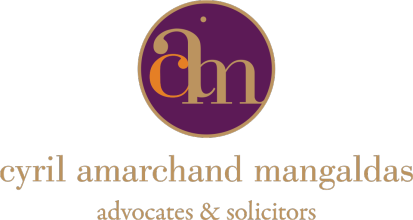In its recent judgment dated January 15, 2025, in C.O. (COMM.IPD-PAT) 38/2022 Macleod Pharmaceuticals Ltd. Vs The Controller of Patents and Anr., the Delhi High Court (“DHC”) tackled some rather tricky but interesting questions, which have surfaced time and again in heavily contested patent infringement and invalidation proceedings in recent years, particularly in the pharmaceutical space.
Sections 64 and 107 (1) of the Indian Patents Act, 1970 (“Patents Act”), are two provisions that the defendant can press into service in a patent infringement suit. Section 64[i] has a wider scope than Section 107[ii] in terms of its invocation, as is evident from their respective wording. Whereas the latter provides for pleading invalidity of a patent or patent claim only as a defence in a suit for infringement, the former may lead to the cancellation/revocation of a patent by the High Court when invoked by:
- any person interested or by the Central Government, stand-alone through a petition or
- a defendant in a suit for the infringement of said patent, through a counter-claim filed therein.
From an intellectual property (“IP”) practitioner’s perspective, the central question is whether the consequences of the invocation of Sections 64 and 107 are the same, i.e., whether a court’s finding of invalidity of asserted patent claims in a patent infringement suit is on par with such a finding, and consequential relief which may be granted, in a revocation petition or in a counter-claim filed in a patent infringement suit.
The Learned Single Judge of the IP Division of the DHC in Macleods (supra) grappled with this and other related questions, differentiating between the effect of the invocation of Sections 64 and 107 and laying out the consequences in terms of the maintainability of a revocation petition seeking to invalidate a patent that had already expired.
Brief Facts of the Case
Macleods Pharmaceuticals Ltd. (“Petitioner”) is engaged in manufacturing and marketing diverse pharmaceutical products, whereas Boehringer Pharma (“Respondent”), a German company, had a registered patent No. 243301 for an anti-diabetic drug called ‘LINAGLIPTIN’ (“Subject Patent”). The petitioner filed a revocation petition under Section 64 of the Patents Act, before the DHC on February 17, 2022, challenging the Subject Patent (“Revocation Petition”). Immediately after, the Respondent retaliated by filing a suit for infringement of the Subject Patent against the petitioner before the High Court of Himachal Pradesh (“Himachal Suit”).
During the course of the Himachal Suit, the Petitioner, in its written statement, raised a defence of invalidity of the claims asserted against it in the suit, invoking Section 107 in the process, while its Revocation Petition, despite several attempts by the Respondent to have it dismissed, remained pending before the DHC.
In the meantime, the term of the subject patent expired on August 18, 2023.
In the instant order, the DHC decided an application filed by the Respondent seeking dismissal of the Revocation Petition on the ground that the Petitioner had already taken a defence of invalidity of patent in its written statement in the Himachal Suit.
Arguments Raised by the Parties
The Counsel for the Respondent/Applicant argued that a written statement pleading the invalidity of the Subject Patent under Section 107 and an action under Section 64 are on par and seek the same relief. There is, therefore, no difference between a finding of invalidity returned in an infringement suit, counter-claim, or a revocation petition, and that such a finding is a finding in rem preventing the patentee from enforcing its patent against others.
The Counsel for the Petitioner responded as follows:
- The defence under Section 107 in an infringement suit has a different legal and practical consequence from a revocation petition/counter-claim under Section 64. The former can be raised selectively qua only the asserted claims of the patents, which if found to be invalid, would not automatically result in the revocation of the patent; however, success in the latter action causes the entire patent to be removed from the Register of Patents (“Register”) “as if it had never existed”. Reliance was placed on Sections 114 and 115 of the Patents Act.
- Moreover, while any court hearing a patent infringement suit may make a finding of invalidity of patent claims under Section 107, only a High Court is vested with the power to issue an order revoking a patent.
- Section 64 provides a stand-alone right, which can be exercised at any point of time whether or not a suit has been filed, independent of whether the patent subsists or has expired.
- If the claim of the patentee for damages survives even after the expiry of the patent, the cause of action to file a revocation petition after the expiry of the patent shall also survive.
Court’s Analysis and Findings
The Court thus had to consider two central questions on
- whether a revocation petition is maintainable, if the same petitioner takes a defence of invalidity under Section 107 of the Patents Act, in an infringement suit filed by the patentee; and
- whether a revocation petition can be filed or sustained (if filed already) after the expiry of the patent term.
On both questions, the Court ruled in favour of the Petitioner.
On Question (i)
The Court held that the Revocation Petition was maintainable, noting that the scope and effect of a petition under Section 64 of the Patents Act is entirely different from that of a defence of invalidity under Section 107.
At the outset, the Court noted that while the power to adjudicate a revocation petition or a counter-claim seeking revocation of a patent filed pursuant to Section 64 was vested only with a High Court, the question of invalidity of patent claims under Section 107 may be adjudicated even by a District Court.
The Court further relied on the divergence between Sections 151 (1) and 151 (2), which prescribe separate consequences for validity/invalidity decrees in a revocation petition and an infringement suit, respectively. Indeed, a successful order pursuant to the former provision leads to the removal of the patent from the Register; however, by itself, success in the latter would not result in the removal of the patent from the Register unless the successful defendant takes additional steps.
The Court noted that this distinction was reflected even in the Petitioner’s own prayers in the Revocation Petition before the DHC and the written statement in the Himachal Suit. While in the former case the Petitioner asks for removal of the patent from the Register, in the latter case, the Petitioner only seeks a declaration that the patent is “liable to be revoked and removed from the Register of Patents”. Under Section 58(1) of the Patents Act, in any proceeding seeking the revocation of a patent, if a High Court were to find a patent to be invalid it can, instead of revoking the patent, allow the patentee to amend the complete specification and keep the patent alive. It cannot, however, give such a direction when invalidity has been raised as a defence in an infringement suit.
The Court further held that just like any other proceeding, a finding of invalidity under Section 107 in a patent infringement suit inter se will have an in personam effect binding only the parties thereto, but would not affect the patentee’s ability to assert the patent against third parties. On the contrary, the revocation of a patent under Section 64 would operate in rem, and the patentee would not be able to assert the revoked patent against any third party.
The Court also clarified the position on the maintainability of a revocation petition when an infringement suit had been filed, noting that the choice lay with the party whether to file a standalone revocation petition or a counter-claim in an existing suit.
On Question (ii)
The Court firstly noted that Section 64 was not bound by any limitation, and as such, no limitation could be read into the section. Thus, the mere expiry of the patent could not bar the filing of an action under Section 64.
Further, and more importantly, noting that mere expiry of the Subject Patent would not have caused the Himachal Suit for patent infringement to become infructuous insofar as the claim for damages is concerned, the Court reasoned that success in the Revocation Petition would mean revocation of the Subject Patent; therefore, the Himachal Suit would have to be dismissed. Thus, there existed a valid cause of action in favour of the Petitioner to pursue the Revocation Petition and that it would not become infructuous even after expiry of the Subject Patent.
Conclusion
The judgment in Macleods (supra) has far-reaching consequences for all stakeholders in patent litigation since it clarifies the fate of proceedings in respect of expired patents.
In patent infringement litigation over the past two decades, one would have come to expect any patentee’s zeal to enforce its patents to fade away upon the expiry of its patent. An expired patent cannot be enforced fresh suits against third parties, and the underlying IP is no longer viable for out-licensing.
Similarly, in cases where a patent expires while revocation petitions seeking its invalidation are still pending, such petitions have most often been dismissed as ‘infructuous’.
In the Indian IP enforcement landscape of just 10 (ten) years ago when damages for past use of intellectual property were hard to prove and even harder to actually recover from judgment-debtors, pursuing revocation petitions did not make commercial sense once the threat of an injunction had been extinguished through the expiry of the patent in suit. However, recent times have seen faster-moving patent litigation, thanks in part to procedural amendments and the growing awareness of the value of IP rights. This has resulted in substantial damages being awarded, even in cases where the patent in suit had expired years before a verdict was delivered[iii]. The possibility of having to pay damages for past use of a “dead” patent has made it imperative for defendants to be able to question the very basis for a finding of patent infringement and a consequential claim of damages.
The judgment carries crucial implications for defendants in patent infringement suits, inasmuch as it permits them to not only simultaneously institute proceedings under Section 64 and present a defence under Section 107, seeking different reliefs in both, but also incentivises diligent prosecution of revocation petitions even after the expiry of the patent in question. The question “whether the patent-in-suit was ever a validly granted patent?” is more important than ever, and the answer as provided by the DHC in Macleods (supra) gives defendants a fighting chance in their quest to avoid substantial damages.
From the patentee’s perspective, the silver lining lies in the fact that Macleods (supra) clarifies that even an order declaring invalidity of asserted claims of a patent does not invalidate the patent itself or efface it from the Patent Register altogether. In fact, it leaves the door open for the remaining claims of the same patent to be asserted against third parties.

[i] Section 64 Revocation of patents
(1) Subject to the provisions contained in this Act, a patent, whether granted before or after the commencement of this Act, may, be revoked on a petition of any person interested or of the Central Government by the Appellate Board or on a counter-claim in a suit for infringement of the patent by the High Court on any of the following grounds, that is to say—
(a) that the invention, so far as claimed in any claim of the complete specification, was claimed in a valid claim of earlier priority date contained in the complete specification of another patent granted in India;
(b) that the patent was granted on the application of a person not entitled under the provisions of this Act to apply therefor:
(c) that the patent was obtained wrongfully in contravention of the rights of the petitioner or any person under or through whom he claims;
(d) that the subject of any claim of the complete specification is not an invention within the meaning of this Act;
(e) that the invention so far as claimed in any claim of the complete specification is not new, having regard to what was publicly known or publicly used in India before the priority date of the claim or to what was published in India or elsewhere in any of the documents referred to in section 13;
(f) that the invention so far as claimed in any claim of the complete specification is obvious or does not involve any inventive step, having regard to what was publicly known or publicly used in India or what was published in India or elsewhere before the priority date of the claim;
(g) that the invention, so far as claimed in any claim of the complete specification, is not useful;
(h) that the complete specification does not sufficiently and fairly describe the invention and the method by which it is to be performed, that is to say, that the description of the method or the instructions for the working of the invention as contained in the complete specification are not by themselves sufficient to enable a person in India possessing average skill in, and average knowledge of, the art to which the invention relates, to work the invention, or that it does not disclose the best method of performing it which was known to the applicant for the patent and for which he was entitled to claim protection;
(i) that the scope of any claim of the complete specification is not sufficiently and clearly defined or that any claim of the complete specification is not fairly based on the matter disclosed in the specification;
(j) that the patent was obtained on a false suggestion or representation;
(k) that the subject of any claim of the complete specification is not patentable under this Act;
(l) that the invention so far as claimed in any claim of the complete specification was secretly used in India, otherwise than as mentioned in sub-section (3), before the priority date of the claim;
(m) that the applicant for the patent has failed to disclose to the Controller the information required by section 8 or has furnished information which in any material particular was false to his knowledge;
(n) that the applicant contravened any direction for secrecy passed under section 35 or made or caused to be made an application for the grant of a patent outside India in contravention of section 39;
(o) that leave to amend the complete specification under section 57 or section 58 was obtained by fraud.
(p) that the complete specification does not disclose or wrongly mentions the source or geographical origin of biological material used for the invention;
(q) that the invention so far as claimed in any claim of the complete specification was anticipated having regard to the knowledge, oral or otherwise, available within any local or indigenous community in India or elsewhere.
(2) For the purposes of clauses (e) and (f) of sub-section (1)—
(a) no account shall be taken of personal document or secret trial or secret use; and
(b) where the patent is for a process or for a product as made by a process described or claimed, the importation into India of the product made abroad by that process shall constitute knowledge or use in India of the invention on the date of the importation, except where such importation has been for the purpose of reasonable trial or experiment only.
(3) For the purpose of clause (1) of sub-section (1), no account shall be taken of any use of the invention—
(a) for the purpose of reasonable trial or experiment only; or
(b) by the Government or by any person authorised by the Government or by a Government undertaking, in consequence of the applicant for the patent or any person from whom he derives title having communicated or disclosed the invention directly or indirectly to the Government or person authorised as aforesaid or to the Government undertaking; or
(c) by any other person, in consequence of the applicant for the patent or any person from whom he derives title having communicated or disclosed the invention, and without the consent or acquiescence of the applicant or of any person from whom he derives title.
(4) Without prejudice to the provisions contained in sub-section (1) a patent may be revoked by the High Court on the petition of the Central Government, if the High Court is satisfied that the patentee has without reasonable cause failed to comply with the request of the Central Government to make, use or exercise the patented invention for the purposes of Government within the meaning of section 99 upon reasonable terms.
(5) A notice of any petition for revocation of a patent under this section shall be served on all persons appearing from the register to be proprietors of that patent or to have shares or interests therein and it shall not be necessary to serve a notice on any other person.
[ii] Section 107 Defences, etc., in suits for infringement
(1) In any suit for infringement of a patent every ground on which it may be revoked under section 64 shall be available as a ground for defence.
(2) In any suit for infringement of a patent by the making, using or importation of any machine, apparatus of other article or by the using of any process or by the importation, use or distribution or any medicine or drug, it shall be a ground for defence that such making, using, importation or distribution is in accordance with any one or more of the conditions specified in section 47.
[iii] Koninklijke Philips Electronics N.V. v. Rajesh Bansal, Sole Proprietor, Manglam Technology, (2018) 251 DLT 602; Strix Ltd. v. Maharaja Appliances Limited, 2023 SCC OnLine Del 7128; LAVA International Limited v. Telefonaktiebolaget LM Ericsson, (2024) 310 DLT 482.






